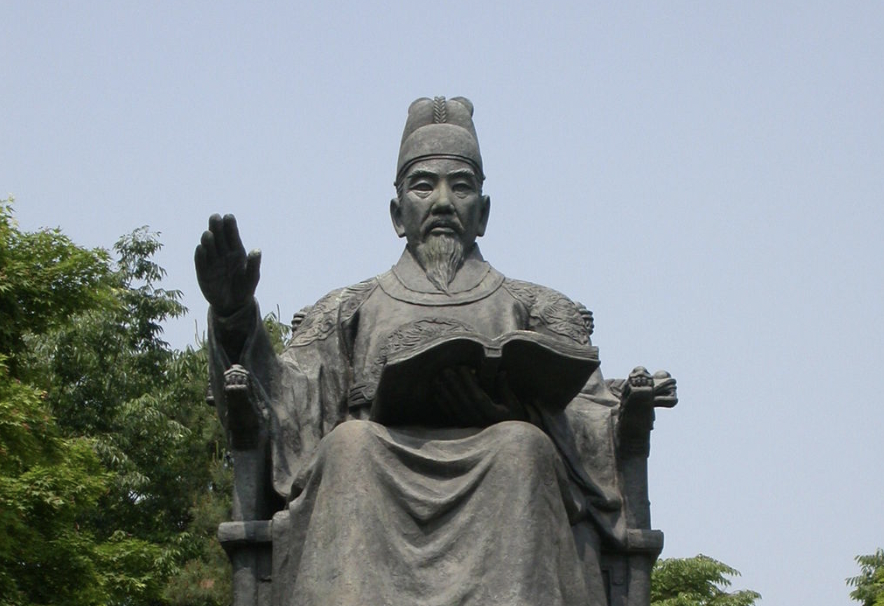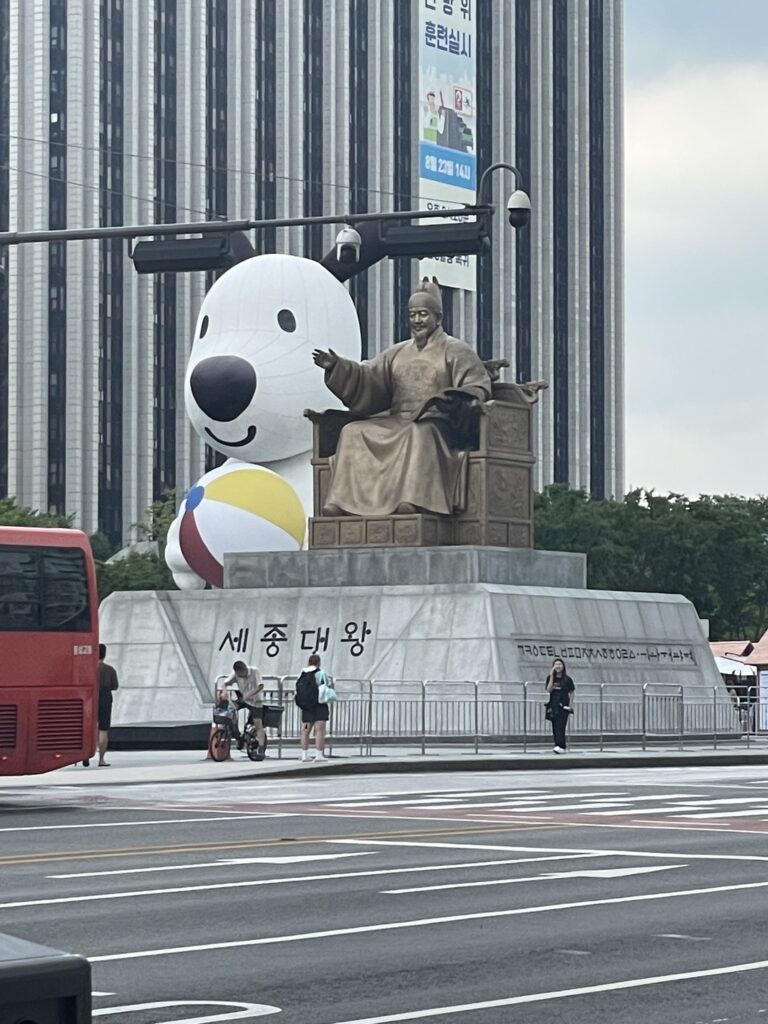
In Korea, they use the Hangul alphabet to write; it didn’t come into creation until 1443 AD, thanks to a monarch who reigned from 1418 to 1450.
King Sejong the Great created the new alphabet in an attempt to increase literacy on the Korean peninsula. It replaced the Sino-Korean Haja alphabet and allowed for more advancements in science and technology. He also used the alphabet to grow the economy.
Sejong was born on 15 May 1397 as the son of King Taejong and Queen Wongyeong in the Kingdom of Joseon (modern-day Korea). He had two older brothers (Yi Je and Yi Bo), three older sisters (Princesses Jeongsun, Gyeongseong and Gyeongan), a younger sister (Princess Jeongseon) and five younger brothers (one of whom was Yi Jong); Seojong was favoured by their father.
By the age of 12, he was named Grand Prince Chungnyeong. His eldest brother, Yi Je, had been heir apparent, but he was removed from his position in 1418 as he was not deemed serious enough about his role. Yi Bo, who was not considered for the heir role, ended up as a Buddhist monk.
Once Yi Je was deemed unfit to rule, King Taejong worked hard to ensure Sejong would be his successor – going as far as to purge the government of those who disagreed.
In September 1418, King Taejong abdicated but kept influence in affairs until his death in 1422.

Sejong had strong political skills and was creative. He appointed those from lower social classes to civil servants and promoted the teachings of Confucious. As a firm believer in Confucious’s teachings, he did his best to suppress Buddhism and banned monks from entering modern-day Seoul. He also shut down five of seven Buddhist schools and decreased the power and wealth from those religious leaders. Muslims were also targeted, with the King issuing a decree against them that banned their head wraps, closed their mosque and required them to worship like the others.
The King attempted to institute a national currency with a bronze coin, but the coins were too expensive to make. He was also known to work closely with the Ming Dynasty in China and opened trade ports with Japan. Regarding the military, he effectively planned and strengthened his forces to protect Joseon. The monarch supported literature and the arts as well.
He had a love of science and created the Hall of Worthies institute inside Gyeongbok Palace to conduct scientific research to advance Joseon’s technology. He also made a farmer’s handbook to help farmers; it provided different farming techniques from across the country to help farmers continue to harvest their crops. The King was close to a great inventor by the name of Jang Yeong-sil, who created new designs for various instruments and created one of the world’s first standardized rain gauges. The King also tasked him with creating a new printing press that was twice as fast as the previous model.
King Sejong was also responsible for a new calendar system in Joseon that was no longer based on China’s capital but instead the capital of Joseon; it also allowed astronomers to accurately predict eclipses.
The King granted women 100 days of maternity leave and husbands 30 days of leave. He also sent out a poll regarding taxation with his people and worked with farmers on the amount they paid in tax based on the economy at the time.

Sejong worked to create Hangul; it was completed in 1443. It was first published in 1446 with a book explaining how to use the new letters and the motives behind them. While he faced backlash from the noble class for the change, Hangul survived to the present day and is the writing form in both North and South Korea despite a ban by King Yeonsangun in the 1500s and the Japanese occupation in the early 1900s.
Hangul was adopted as the national writing system in 1849, but once Japan occupied Korea, Hangul was banned until Korea was liberated in 1945.
Sejong married Queen Soheon and had ten children, including Yi Hyang (later King Munjong) and Yi Yu (later King Sejo). He also had several Royal Noble Consorts, Royal Consorts and Court Ladies with whom he had children. In total, he had 25 children.
King Sejong died in 1450 at the age of 52 after going blind due to complications from diabetes. He was succeeded by his eldest son, Yi Hyang.
King Sejong is an important figure in Korean history, and as such, his birthday is officially recognised in Korea and his face features on the 10,000 Won banknote. The King having “the Great” added to his name is fitting as the monarch is one of the historical figures Koreans are most proud of.

